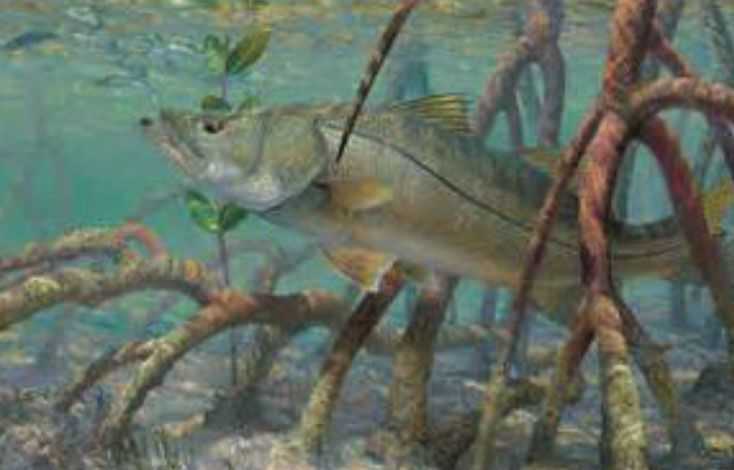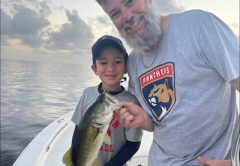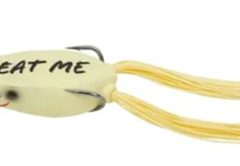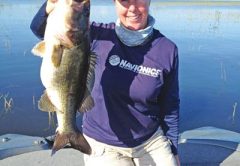One of the most popular inshore game fish in south Florida is the snook which are known for their fighting ability as well as their table fare. The word snook comes from the Dutch word “snoek” meaning pike. Within Florida there are five species of snook, the common snook, the small scale fat snook, the large scale fat snook, the tarpon snook, and the swordspine snook. What makes these fish easy to identify is their distinctive lateral line which also is the basis for one of their ‘local’ names, linesiders.
The common snook is the largest and most common of the species and can grow up to 48-inches and weigh in excess of 40 lbs. The State record for a common snook weighed 44 lb 3 oz and was caught near Ft Myers. The pending world record is a 60 lbs Pacific snook caught off the coast of Costa Rica.
The geographical range of snook is restricted by their need for warm tropical waters and they cannot tolerate waters less than 60° F. This limits their range to the Caribbean Islands, Central America, upper South America, the Gulf coast and southern Florida. Though they can range as far north as Jacksonville in the summer, most commonly they are found from Port Canaveral south through the Keys and up to Tarpon Springs on the Gulf coast.
As an inshore species snook can tolerate fresh, salt, and brackish waters though some species like the common snook are more consistently found in water with higher salt content. The fat snook, tarpon snook and the swordspine snook are more common to interior waters and can be found in fresh water.
One important point to remember is that snook, whether they are caught in freshwater, brackish water, or saltwater are considered a saltwater species, so to harvest a snook in Florida you must possess a saltwater license and a snook stamp. Harvesting a snook on a freshwater license will just get you in trouble with the FWC.
Another important point to remember is that the State regulates the Atlantic coast and the Gulf coast independently for snook. Depending on their population you may find the harvest seasons have different dates as well as the size and bag limits. Presently both coasts have a bag limit of one snook per day. The harvest size slot limit for the Atlantic coast is not less than 28-inches and not greater than 32-inches. The Gulf coast slot limit is not less than 28-inches and not greater than 33-inches.
Lake Okeechobee and the upper Kissimmee River belong to the Atlantic region while all rivers flowing westward from Lake Okeechobee belong to the Gulf region. The Atlantic season opens Sept 1, 2015 and closes Dec 14, 2015 while the Gulf season opens Sept 1, 2015 and closes Nov 30, 2015.
Locally, since Lake Okeechobee is connected to both the Atlantic and the Gulf of Mexico via the Okeechobee Waterway (OWW) which consists of the St Lucie River on the east and Caloosahatchee River on the west, though uncommon, snook can be caught in and near the lake. Most likely these fish will be juveniles and will need to be released back to the lake.
As for fishing techniques, snook like bass are generally an ambushing type fish. They prefer resting in the eddies of moving current and structures waiting for their next meal. Inlets, spillways, bridge pilings, piers, docks, seawalls, and mangrove trees are all favorite holding spots for snook. Personally I do much better fishing at night for snook than during the day time but then I generally fish with artificial baits. Shrimp, mullet, and pilchards are all good baits whether dead or alive. Artificials such as DOA Shrimp, DOA Terror Eyz, bucktail jigs, Long A Bombers, or any lure that can handle current and mimic a shrimp or swim like a mullet will work. My go to lure for waters with a nice current is a J-Plug. Though not available locally, it’s a trolling lure used in northeast salmon fishing and it digs and darts like a mullet and is very effective either trolling or casting into current. Whichever bait you choose there is no mistaking a snook bite. When that snook opens up its cavernous mouth and sucks in your bait, there is no mistaking that thump and the strength of their first run. After catching one, you’ll be jonesing for more.








